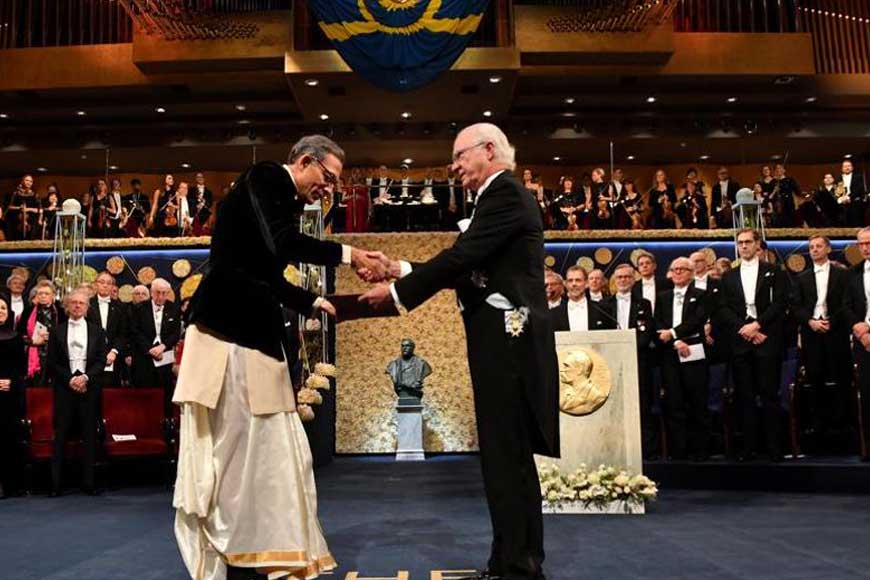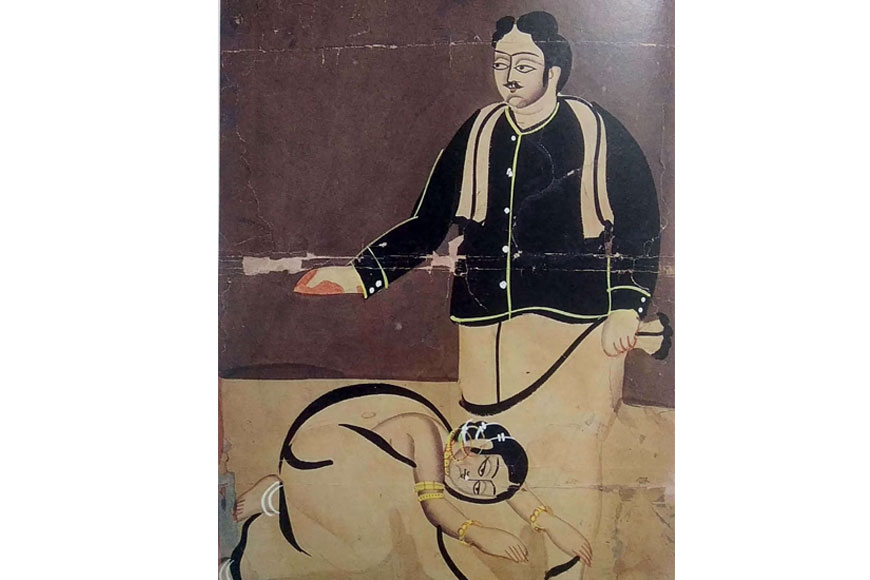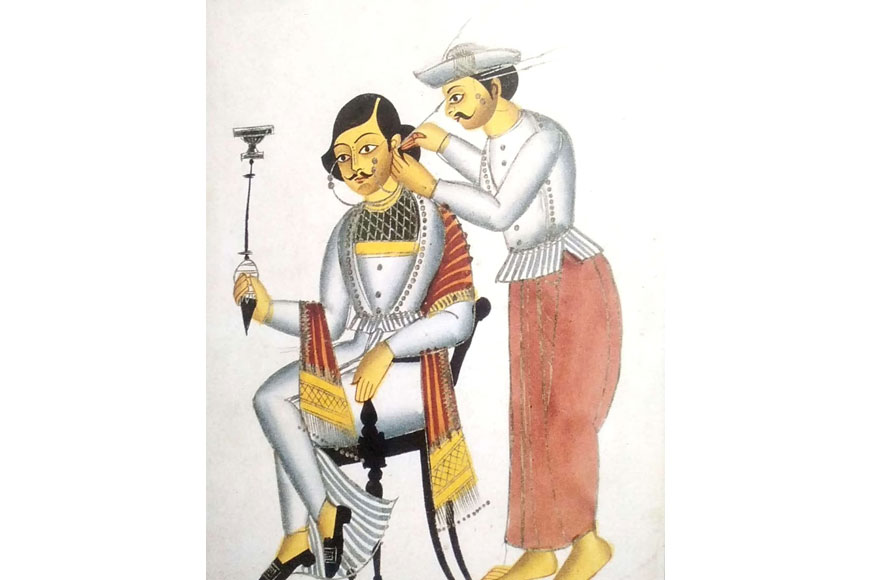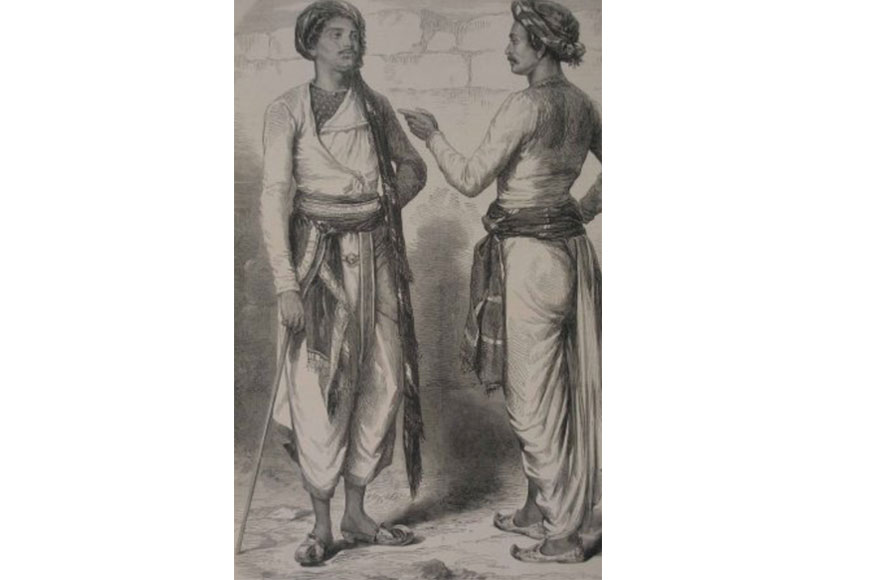Abhijit Banerjee wore a dhoti while receiving Nobel Prize! How dhoti carries Bengal’s pride

It was such a moment of pride to see economist Abhijit Banerjee walking up the podium in a Bengali dhoti to receive the Nobel Prize. An attire that was popularized in Bengal by the zamindars and babus, who also linked dhoti to Bengal Renaissance bringing in different styles of wearing this simple loin cloth. Dhoti is not just an attire, rather it has a story to tell. Else why would it be a part of a series of Kalighat patas, revealing the picture of a babu with his oiled and curly hair parted in the middle and a garland of white flowers around one wrist, the corner of the pleat of his dhoti in one hand and a hukkah in the other? The manner in which the pleats were worn and even the textile used varied depending on how rich the babu or zamindar was.
This babu culture was mostly fostered by the zamindari system and the wealthy class of Bengal, those who challenged the orthodox social ways of Bengal and gave rise to a completely new way of living in the then British-ruled Kolkata. Even though the babus modernized themselves as they were introduced to motor cars that replaced the carriages and palanquins, cigars in place of hukkas, imported perfumes instead of Indian atar, foreign liquors in place of home-made ones, they never left their dhotis, rather learnt how to wear it with a British coat on top.

Bengal’s sartorial legacy of attire was derived from the royal patronage and the nobility that valued the richness of traditional techniques of weaving, embroidery and stitching. This legacy is the common heritage of both present-day West Bengal and Bangladesh where these traditional methods of curating beautiful weaves exist in curious harmony with the modern-day synonymity of the ‘fashionable’ with the western-wear. The dhoti is basically a loincloth which is not just worn in Bengal but across South India too. But Bengal’s dhoti has a regal appeal.

Silk dhotis came into style in Kolkata through Laksmikanta Gangopadhyay. This Laksmikanta-styled dhoti is as intricately woven as the silk used for traditional dhotis. Before Kolkata became the vibrant city we know today, it was a wasteland. A young warrior and scholar, and descendant of one of the five original Indian Sanskrit scholars who had travelled to Bengal to improve the social conditions in the 10th century, Laksmikanta Gangopadhya toiled for fifty years for clearing the land to make it habitable. When he was through, he invited thousands of people from different caste, creed and profession to settle in the area. In 1698, a treaty was signed between the major landowner, Sabarna Roy Chowdhury and the East India Company. The Treaty precipitated the making of vast fortunes for the British Raj that helped build the British Empire across the globe.

Kolkata turned into an exotic and bustling port and the centre for trade and commerce of India. Jute, silk and muslin, spices, jewels, tea and sugar were exported to England, Europe, America, and even Australia. With the lavish styles and inroads of European culture, Bengal’s simple dhoti also changed style in wearing and draping. Even today, the tradition continues, specially during weddings when the groom wears a Giley or Koncha dhoti like the babus of yesteryears.










